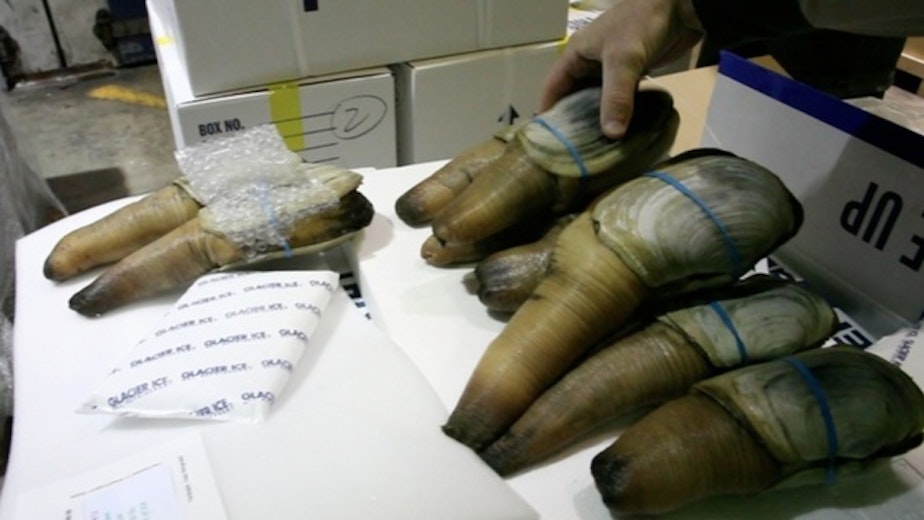Are You Going to Eat That? China’s Latest Reason It Considers Northwest Shellfish Unsafe

After China banned all imports of West Coast shellfish, officials in the U.S. defended the imports by saying the Chinese tested the wrong parts of the clams.
The clams in question were geoducks, 10-pound bivalves that live up to 150 years and have the distinct appearance of an elephant trunk shoved into a clamshell.
When the Chinese tested recent U.S. shipments of those clams, they included portions of the animal like its skin and its gutball that nobody eats, U.S. officials said, but that typically have the highest concentrations of toxins.
Now Chinese officials have a new message: We eat the skin and the gutball.
In a letter to the U.S. National Oceanic and Atmospheric Administration, China’s food and health inspection agency not only explained its reasoning for testing the whole clam, but called into questioned the monitoring practices in the U.S.
Sponsored
The letter indicated that China’s ban on West Coast shellfish would continue without change. The ban applies to all bivalve shellfish, including oysters, scallops and mussels — but it was specifically samples of geoduck clams from Washington and Alaska that triggered the ban in December.
This latest letter, dated Jan. 23, included 20 different requests for information, including details on seafood safety standards, testing procedures and an explanation of the U.S. shellfish sanitation program. It also stated a desire to send an audit team of Chinese inspectors to the U.S. to conduct on-site observations of how the U.S. monitors its shellfish.
“The U.S. system shows defects on regulating and monitoring the safety and hygiene for geoduck export to China,” the letter states. “Therefore, the geoduck originating from the USA poses high safety risk in terms of heavy metal arsenic.”
China issued the ban on all imports of West Coast bivalve shellfish after saying the country’s inspectors found unsafe levels of arsenic and a toxin that causes paralytic shellfish poisoning.
The test results stumped U.S. officials, who sent a reply outlining U.S. policy and the safety protocols in place where the geoduck was harvested. After tracing the PSP toxin to a shipment from Alaska and the arsenic to a shipment from Redondo, Wash., Washington officials conducted additional tests and deemed their shellfish safe for import, though that declaration was based on tests that showed all parts of the clam were below unsafe levels except for the skin, which showed arsenic levels three times the Chinese standard. Because arsenic is not considered a common toxin in U.S. shellfish, the U.S. does not have a standard for safe levels of arsenic in shellfish.
Sponsored
China’s ban, which spans Northern California through Alaska, has caused significant problems for Washington’s $270 million shellfish industry. The U.S. exported $68 million worth of geoduck clams in 2012 — most of which came from Puget Sound. Nearly 90 percent of that geoduck went to China.
Read: Waypoints Blog's previous coverage of China's ban on U.S. geoduck imports.
